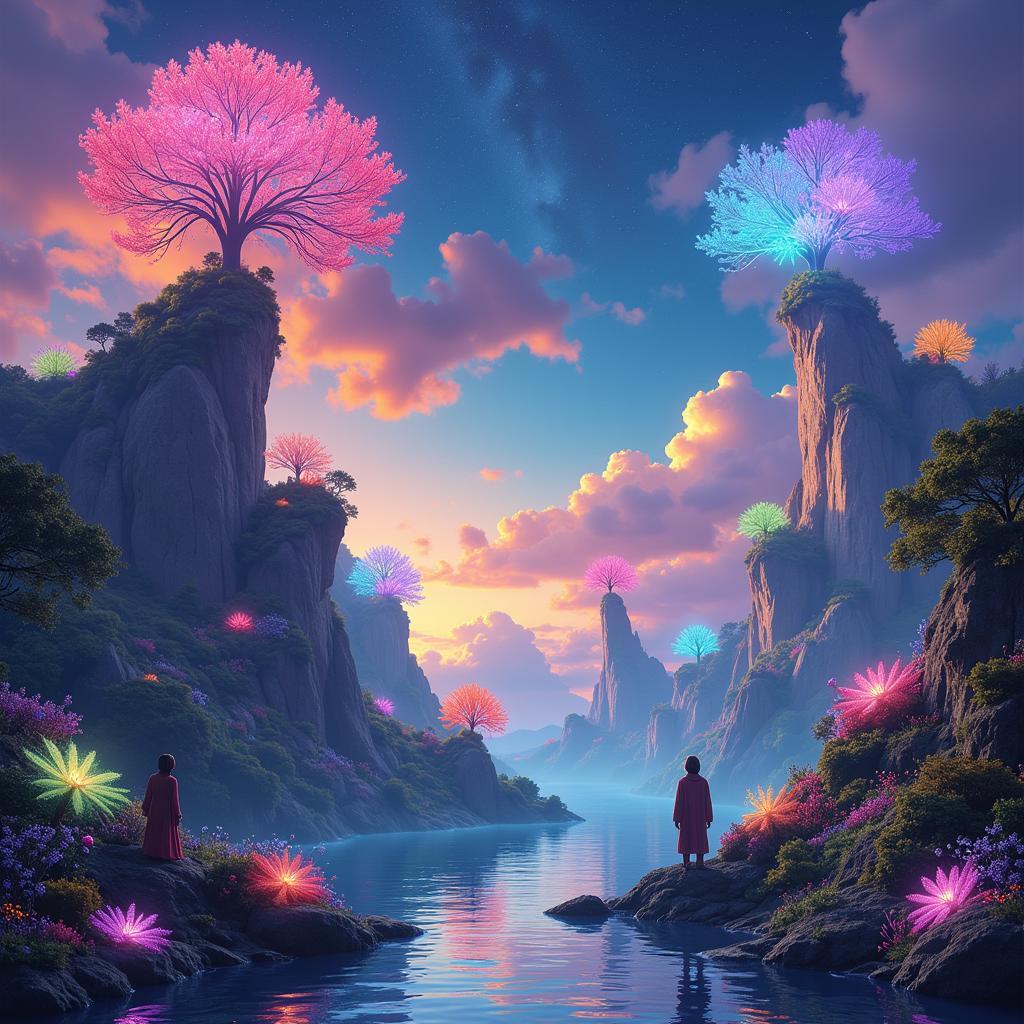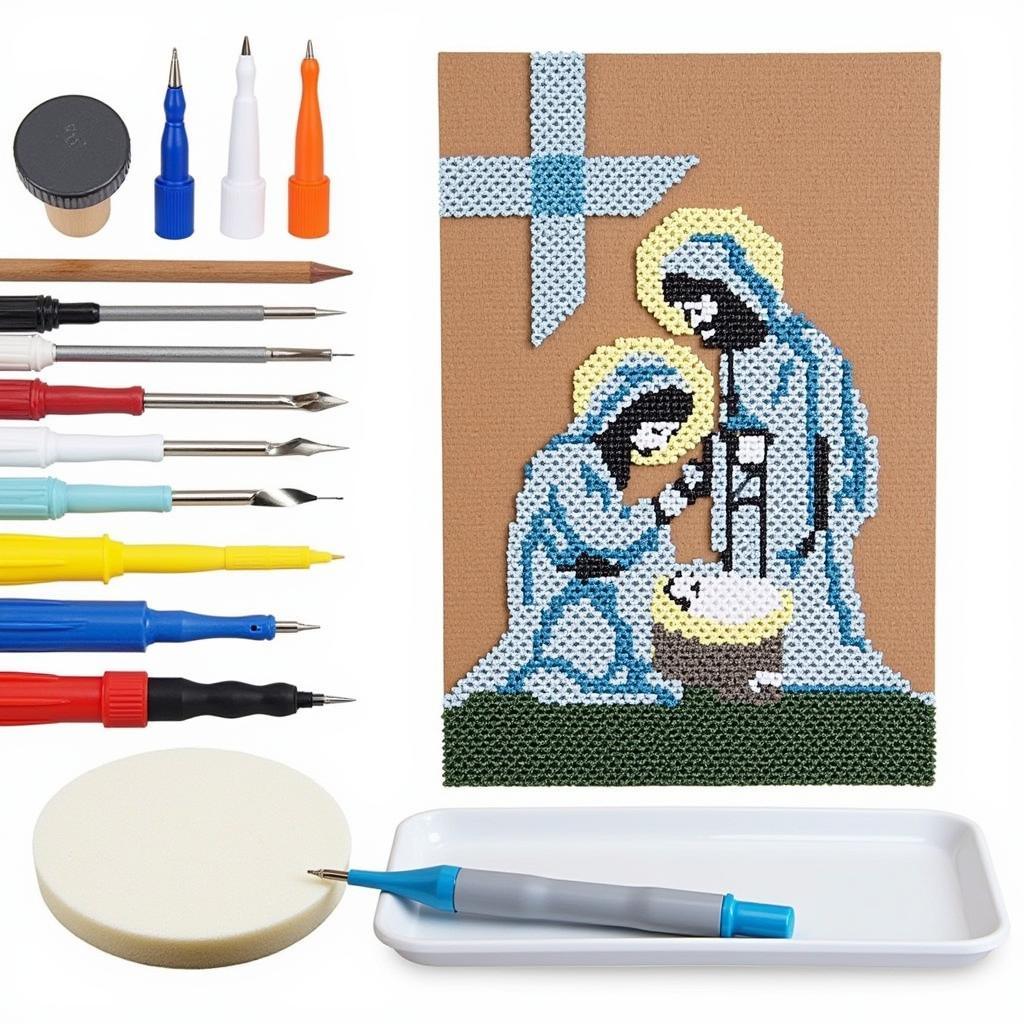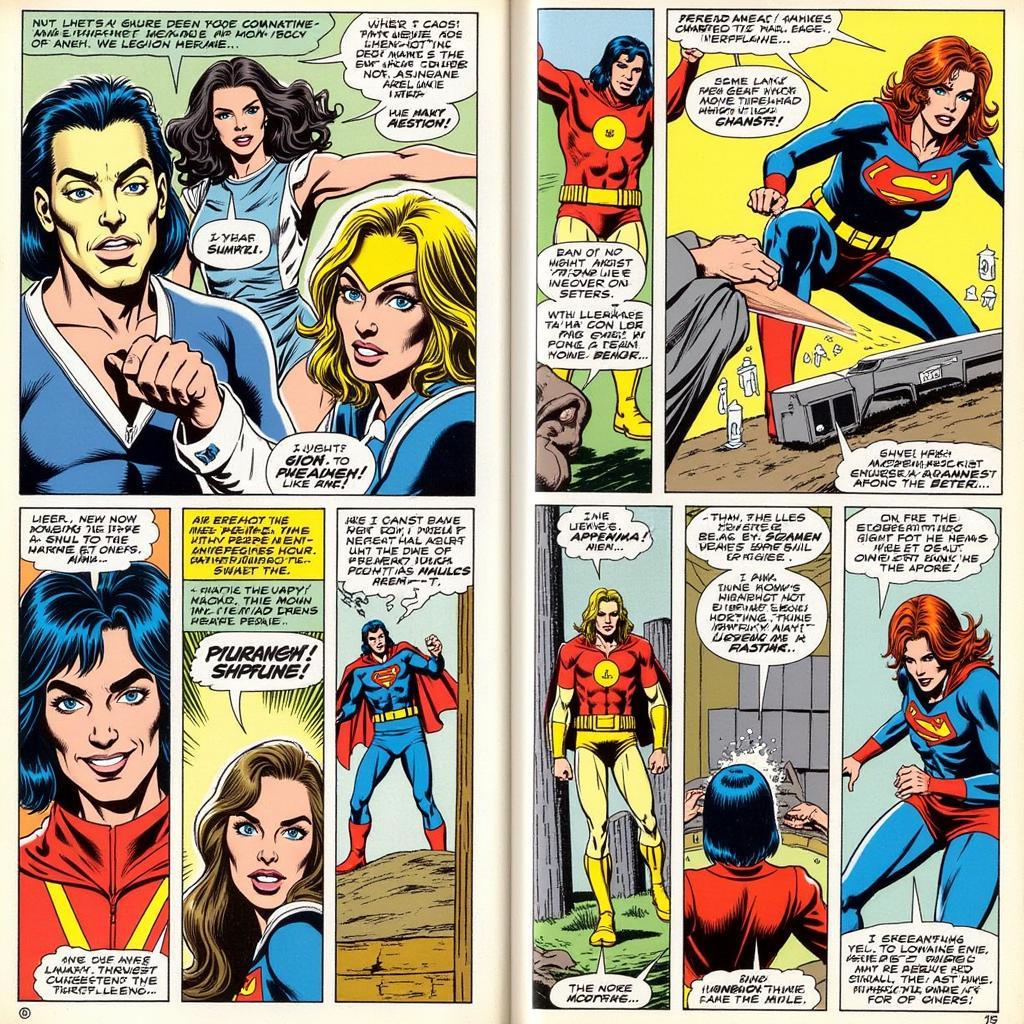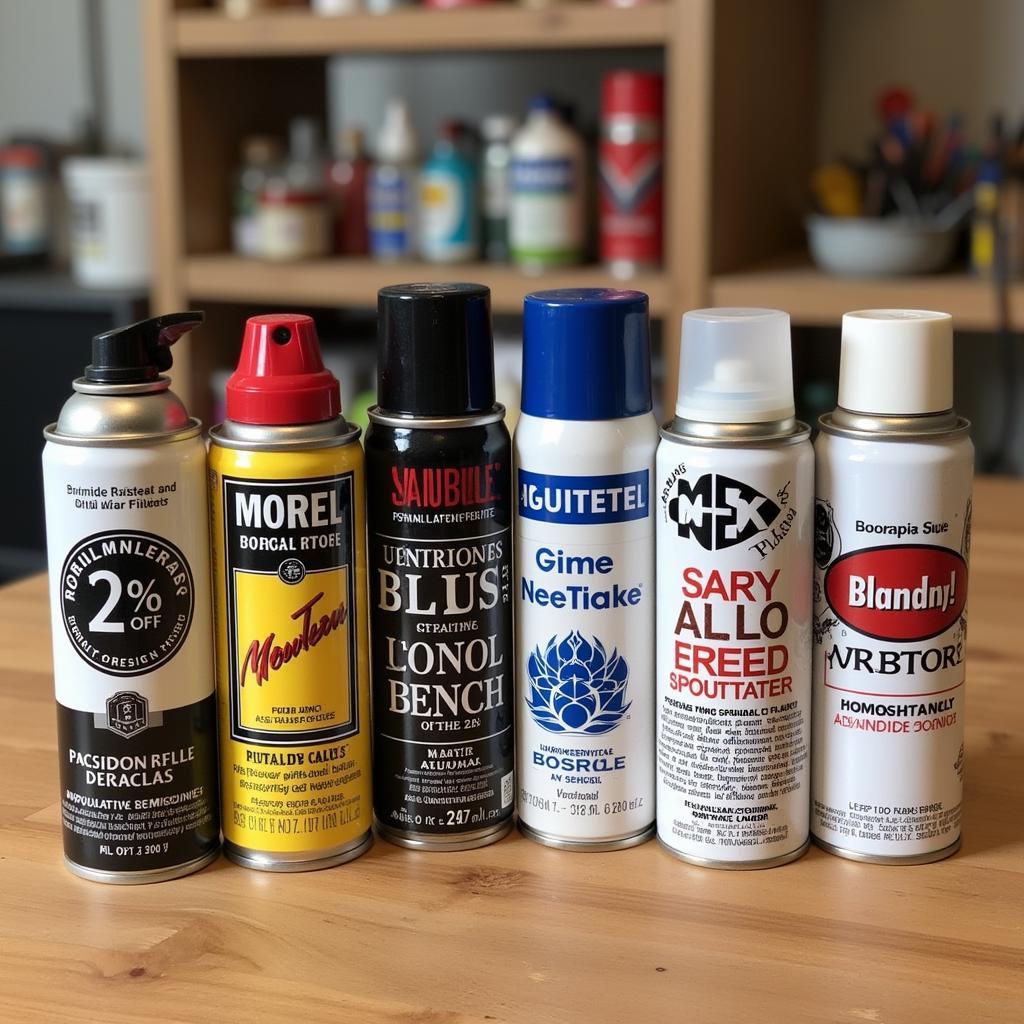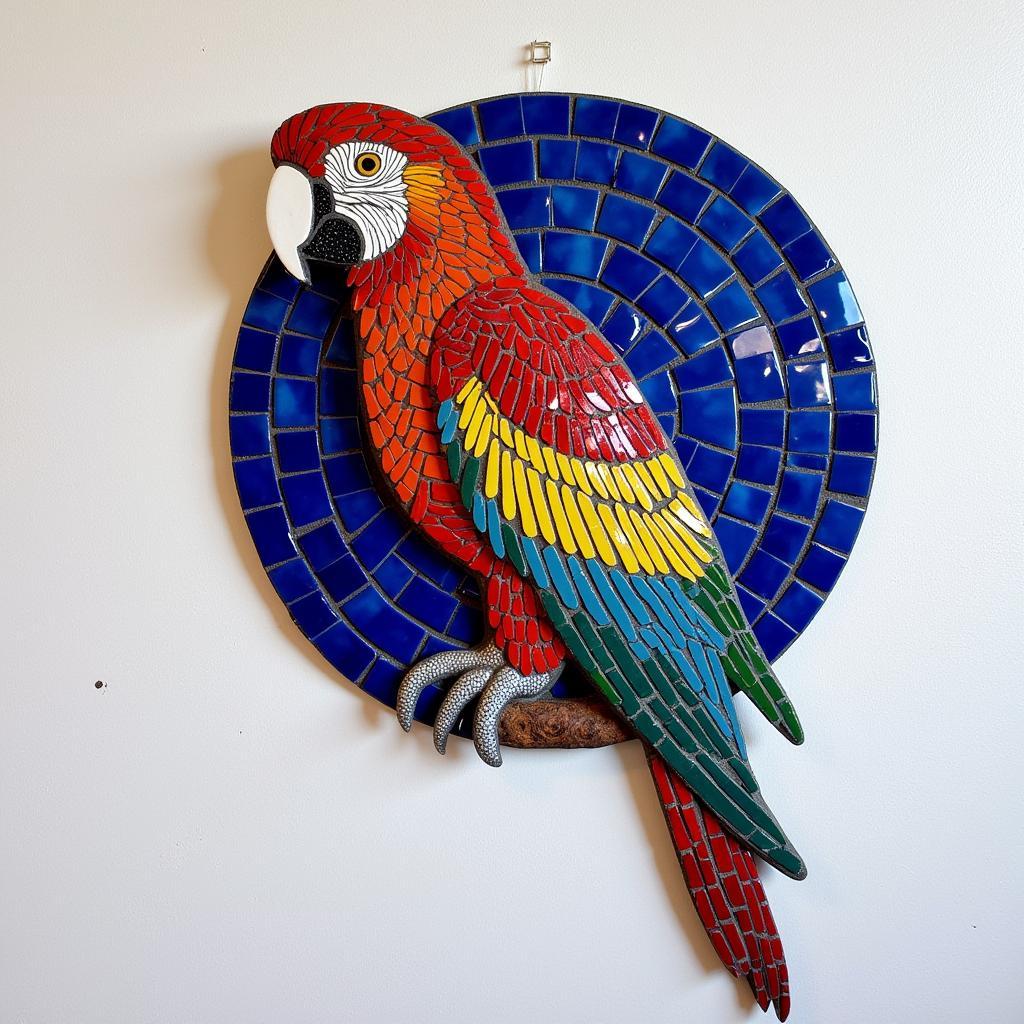Exploring the Depths of Spiritual Psychedelic Art
Spiritual Psychedelic Art is a captivating genre that blends vibrant colors, intricate patterns, and mystical symbolism to evoke profound spiritual experiences. Inspired by altered states of consciousness, often induced by psychedelic substances, this art form delves into the depths of human consciousness, seeking to represent the interconnectedness of all things and the transcendent nature of reality.
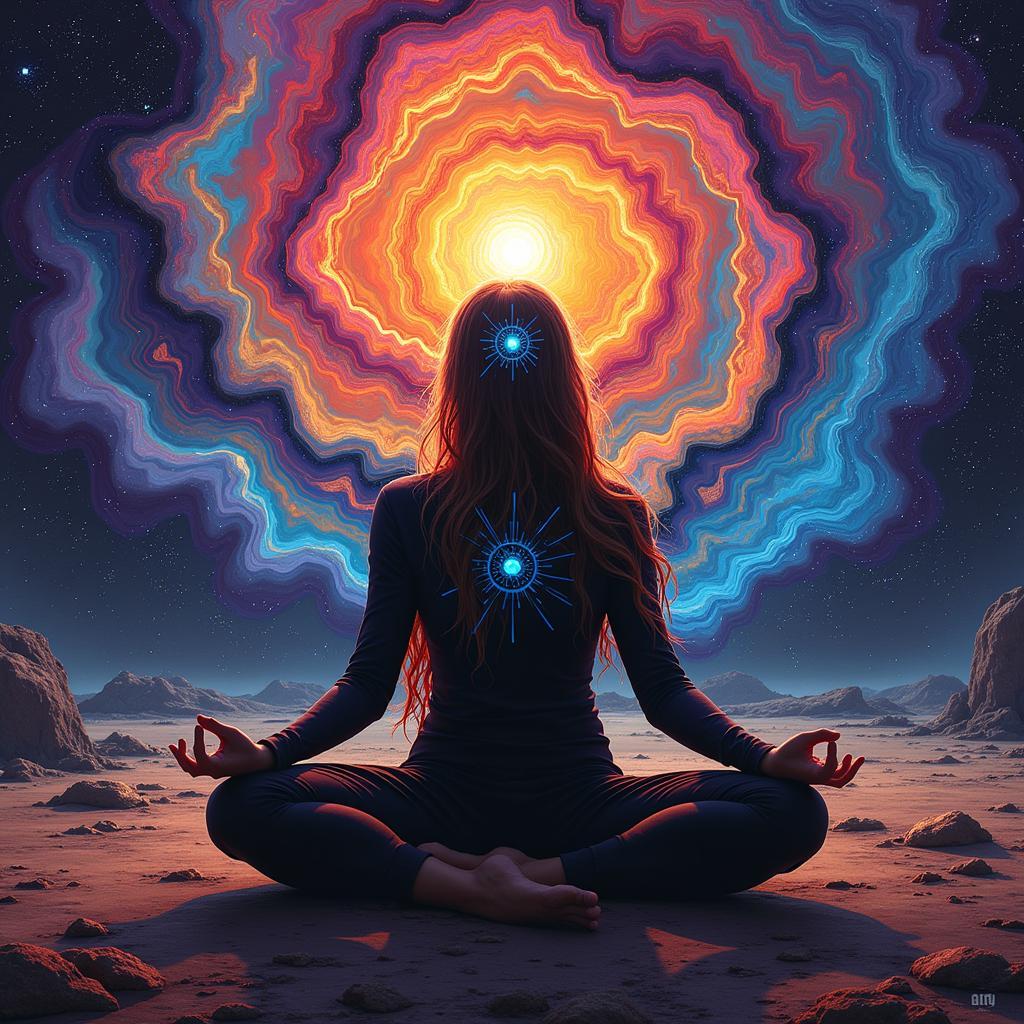 Spiritual Psychedelic Art: Meditation
Spiritual Psychedelic Art: Meditation
Tracing the Roots of Psychedelic Art
While the term “psychedelic art” emerged in the 1960s alongside the counterculture movement, its roots can be traced back to ancient shamanic traditions and mystical art forms found across various cultures. From the intricate mandalas of Tibetan Buddhism to the visionary paintings of Hildegard von Bingen, a 12th-century Christian mystic, art has long been used as a tool for exploring altered states of consciousness and connecting with the divine.
The modern psychedelic art movement gained momentum in the mid-20th century, fueled by the growing interest in psychedelic substances like LSD and psilocybin. Artists like Alex Grey and Pablo Amaringo, often drawing from their own experiences with these substances, created visionary artworks that depicted the fluidity of consciousness, the interconnectedness of all beings, and the dissolution of ego boundaries.
Key Themes and Motifs in Spiritual Psychedelic Art
Spiritual psychedelic art is characterized by recurring themes and motifs that reflect the transcendent experiences it seeks to convey:
- Vivid Colors and Intricate Patterns: Bold, often fluorescent colors dominate psychedelic art, creating a sense of vibrancy and otherworldliness. Intricate geometric patterns, inspired by mandalas and other sacred geometries, symbolize the interconnectedness of all things and the underlying order of the universe.
- Mystical Symbolism: Spiritual psychedelic art often incorporates symbols from various mystical traditions, such as chakras, mandalas, and the Flower of Life. These symbols represent spiritual concepts, archetypes, and states of consciousness, inviting viewers to contemplate their deeper meaning.
- Transformation and Transcendence: The transformative nature of psychedelic experiences is a central theme in this art form. Artists often depict figures undergoing metamorphosis, symbolizing spiritual awakening, personal growth, and the dissolution of the ego.
- Connection to Nature: Many psychedelic artists find inspiration in nature, portraying its beauty and power in surreal and fantastical ways. Plants, animals, and natural landscapes become imbued with a mystical significance, reflecting the interconnectedness of all living things.
The Influence of Music and Counterculture
The 1960s witnessed a powerful synergy between psychedelic art, music, and the counterculture movement. Artists like Rick Griffin and Stanley Mouse created iconic concert posters and album covers for bands like Jimi Hendrix and the Grateful Dead. These artworks, often featuring swirling lettering, distorted imagery, and vibrant colors, became synonymous with the psychedelic experience and the counterculture’s embrace of altered states of consciousness.
The influence of music is evident in the rhythmic flow and vibrational quality of many psychedelic artworks. Artists often sought to translate the auditory experience of music into visual form, creating works that pulsate with energy and evoke a sense of synesthesia.
The Enduring Legacy of Spiritual Psychedelic Art
Spiritual psychedelic art continues to captivate and inspire artists and art enthusiasts alike. Contemporary artists are pushing the boundaries of the genre, experimenting with new technologies and mediums to create immersive and thought-provoking works. Digital art, virtual reality, and projection mapping offer exciting new avenues for exploring the themes of consciousness, spirituality, and the nature of reality.
Beyond its aesthetic appeal, spiritual psychedelic art serves as a reminder of the transformative power of altered states of consciousness. It invites us to question our perceptions, explore the depths of our own being, and connect with a sense of wonder and awe at the mystery of existence.
FAQ
1. What is the difference between psychedelic art and visionary art?
While the terms are often used interchangeably, psychedelic art specifically refers to art inspired by psychedelic experiences, often induced by substances like LSD or psilocybin. Visionary art encompasses a broader range of styles that draw from mystical, spiritual, or shamanic sources, seeking to depict inner visions and transcendent realms.
2. What is the significance of mandalas in psychedelic art?
Mandalas, often depicted as intricate circular designs, hold deep spiritual significance in Hinduism and Buddhism. They represent the universe in its entirety and are used as tools for meditation and spiritual practice. In psychedelic art, mandalas symbolize the interconnectedness of all things and the underlying order of the cosmos.
3. How has technology influenced contemporary psychedelic art?
Digital art, virtual reality, and projection mapping have opened up exciting new possibilities for psychedelic artists. These technologies allow artists to create immersive and interactive experiences that blur the lines between the real and the virtual, offering viewers a glimpse into altered states of consciousness.
Need More Inspiration?
Explore these related articles to dive deeper into the world of psychedelic art:
For any inquiries or assistance, please don’t hesitate to contact us:
Phone: 02462573573
Email: [email protected]
Visit us at: Savico Megamall, 7-9 Đ. Nguyễn Văn Linh, Gia Thụy, Long Biên, Hà Nội 10000, Việt Nam.
Our dedicated customer support team is available 24/7 to assist you.
